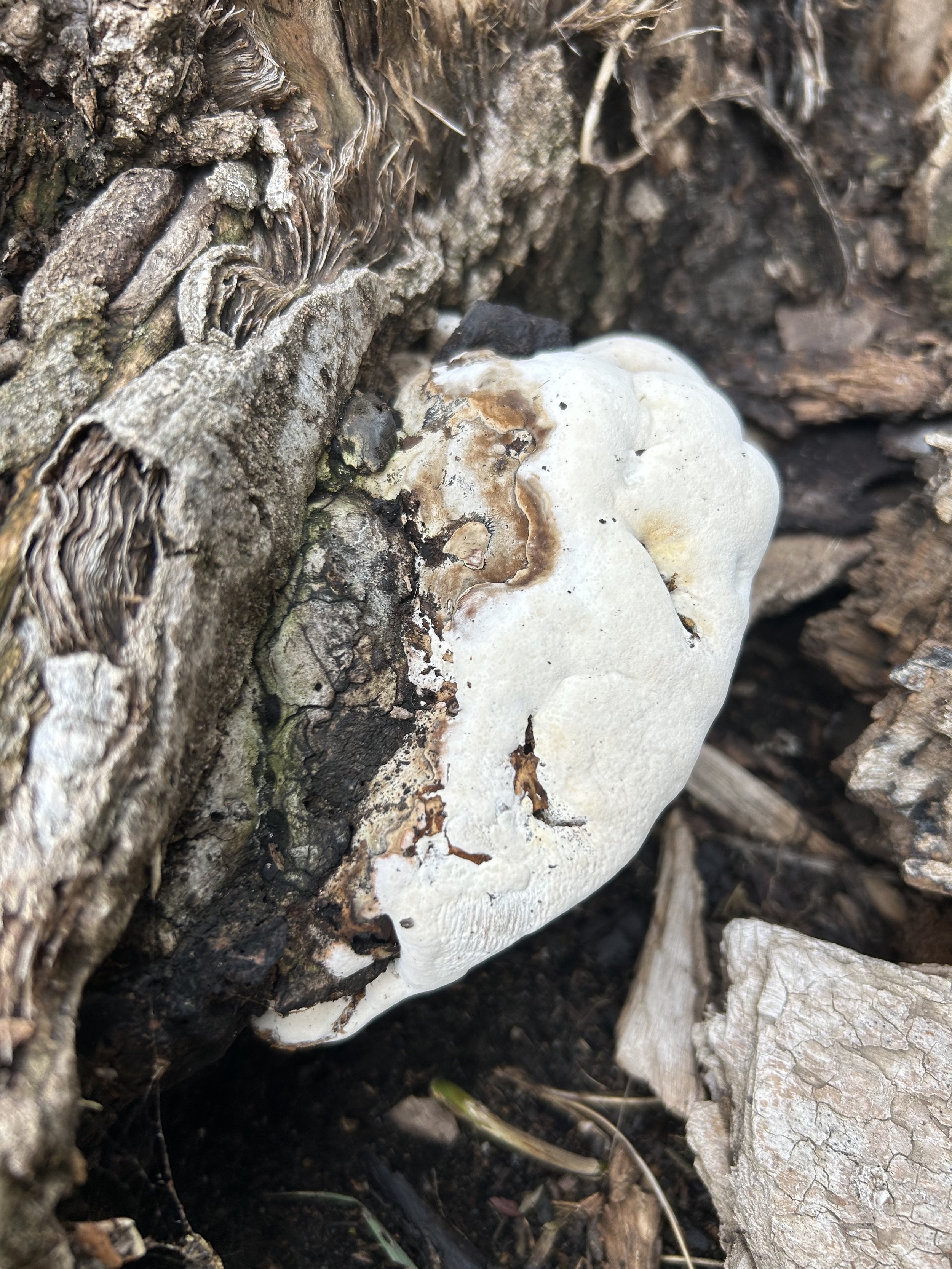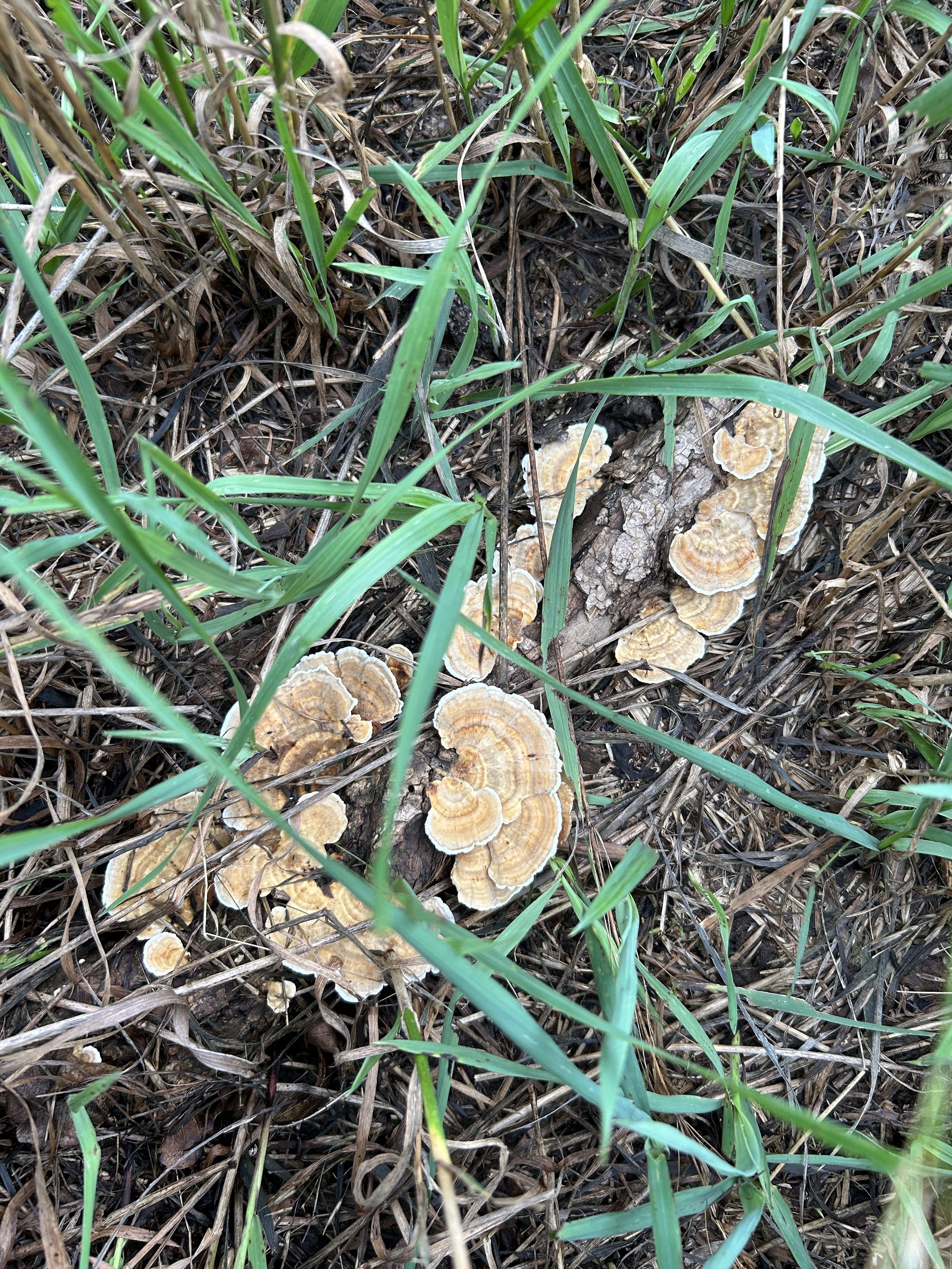Checking on the cows and fungi
We use cattle to help us restore the biology to the soil.
Cows can be used as part of a holistic approach to prairie restoration through a practice known as managed grazing or conservation grazing. When properly implemented, this approach can mimic the historical role of large herbivores, such as bison, in shaping and maintaining prairie ecosystems. Here are some ways in which cows can be utilized for prairie restoration:
Grazing Mimicry: Historically, large herbivores played a crucial role in shaping prairie landscapes through grazing. Cows can be used to mimic this natural process, helping to manage vegetation, control invasive species, and promote the growth of native grasses and forbs. Grazing helps maintain the openness of the landscape, preventing the dominance of woody vegetation.
Seed Dispersal: Cows can inadvertently aid in seed dispersal. As they move through the landscape, seeds can attach to their fur or be transported in their digestive systems. This can contribute to the natural dispersal of seeds, promoting the growth of diverse plant species within the prairie.
Vegetation Management: Controlled grazing can be used to manage vegetation composition and structure. By strategically moving cattle through different areas of the prairie at specific times, land managers can influence the abundance of certain plant species, control invasive plants, and promote the regeneration of native vegetation.
Soil Disturbance: Cows, through their grazing and movement, can contribute to soil disturbance. This can be beneficial for promoting seed germination and establishing new plant growth. Moderate soil disturbance can also prevent the accumulation of thatch and create microsites for seedling establishment.
Dung Fertilization: Cattle dung serves as a source of organic matter and nutrients for the soil. It contains nutrients like nitrogen and phosphorus, which can contribute to soil fertility and support plant growth. The dung also provides habitat for dung beetles and other decomposers, enhancing nutrient cycling.
Restoration of Disturbed Areas: Cows can be employed to restore degraded or disturbed prairie areas. By carefully managing their grazing patterns, land managers can encourage the recovery of native vegetation in areas that have been impacted by agriculture, development, or other disturbances.
Rotational Grazing: Implementing rotational or planned grazing systems ensures that cattle are moved through different sections of the prairie in a controlled manner. This prevents overgrazing, allows for rest and recovery periods, and promotes a more even distribution of grazing pressure, supporting the overall health of the ecosystem.
It's important to note that effective management is crucial when using cattle for prairie restoration to prevent overgrazing and ensure positive ecological outcomes. Collaboration with ecologists, land managers, and conservationists is often necessary to develop and implement grazing plans that align with the specific goals of prairie restoration projects.


